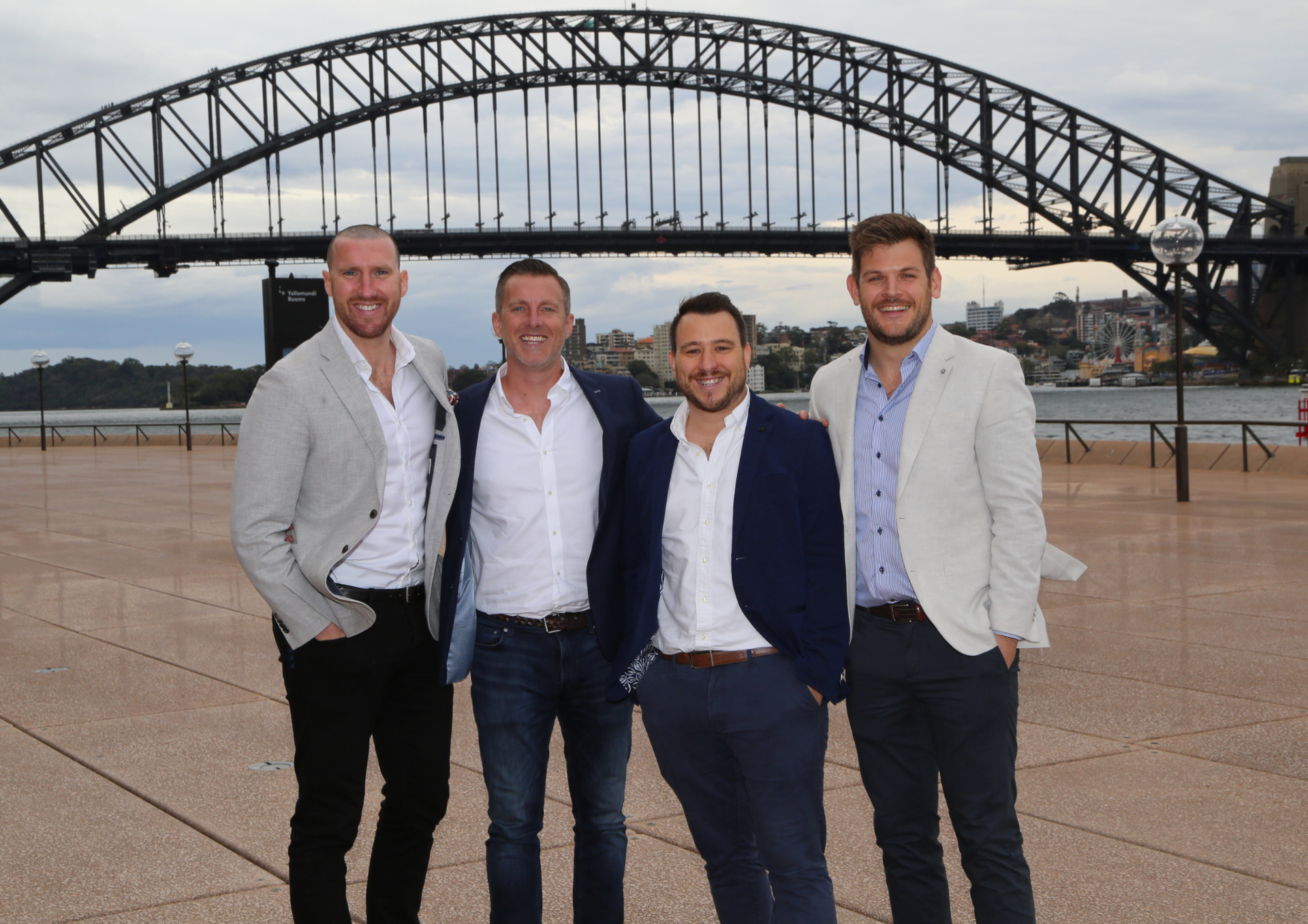Cracking the code for diversity. equity, and inclusion in tech - Brisbane Roundtable
Tech employers are undertaking substantial efforts to invest in workplace initiatives to enhance diversity, equity, and inclusion (DEI). But hiring managers still struggle to identify and hire talent from diverse backgrounds.
Off the back of International Women’s Day 2023 and with it, fresh discussions and data around DEIB and the talent landscape, it’s clear that unfulfilled diversity promises are piling up.
But where should our DEIB efforts start… while we’re hiring or well before then?
On Thursday, 16th March, Tech Talent Acquisition leaders joined Talenza’s Brisbane team to share successes and brainstorm ideas to help each other crack the code for DEIB across the employee lifecycle. Here’s the current state of play.
In this guide:
The tech talent acquisition landscape
We all know that DEIB isn’t a trendy, checkbox-ticking nice to have. It’s a seriously smart business strategy that helps employers remain attractive and competitive. But for the tech industry, diversity goals and intentions don’t seem to match with the right actions and outcomes.
General Assembly’s recent survey, “The State of Tech Talent Acquisition 2023” found:
- 87% of respondents say that their company has not made the changes to the hiring process necessary to meet diversity goals.
- 1 in 5 leaders say less than 10% of their tech talent comes from a diverse background.
- For 18% of respondents, diversity of the talent pool was cited as the most important success metric. However, diversity is still an emerging metric across all businesses.
We wanted to know how Australian tech businesses define DEIB and value its impact on the organisation.
Defining DEIB
DEIB is a long game requiring whole-of-organisation commitment and action. Our roundtable host shared how they define DEIB in the workplace:
Diversity, as a mix of different genders, experiences, and demographic backgrounds.
Equity, in making the environment fit the individual’s needs.
Inclusivity, as feeling supported and that you have a place.
Belonging, as how we feel our voice is heard in the workplace.
The biggest challenges for tech employers
Roundtable participants were asked to share their biggest challenges when it comes to workplace diversity. We focused on these five:
- Attracting candidates from diverse backgrounds in an already tough market. Tech employers are always looking for ways to better market themselves to candidates, which has meant bringing a greater DEIB focus and intervention into the hiring process.
- The many diversity targets and conversations that happen often but feeling stuck in choosing the right place to start (leading to inaction).
- Leadership buy-in – A Chief Information Officer in attendance has fiercely advocated for
leadership participation in the organisation’s DEIB journey. Not only do leaders need to be educated in DEIB purpose, initiatives, and awareness, but they must invest their time in driving the change process.
- Multigenerational workforces – In particular, an aging workforce where employers are seeing some of their most valued employees leave with IP and industry knowledge, but current hybrid working environments are limiting the way this expertise can be captured and shared among younger teams.
- Identifying the right diversity strategies and metrics – and their ongoing improvement!
Attraction tactics – job ads and source of hire
Attraction tactics have a key role in helping to improve the diversity of applicant pools and therefore, future hires. Roundtable participants shared a few ways they’re approaching attraction differently:
- For one company, they’re re-looking at the language and strict criteria often used in job ads that deters people from even applying. For example, the oft-cited statistic that a man will look at a job ad and apply if he meets 60% of the criteria, whereas women tend to apply for ‘safer bets’ where they confidently meet 100% of criteria.
- One company’s approach is to intervene during shortlisting – they’ll make sure to intentionally meet with people from a range of backgrounds, such as, interviewing equal men and women, internal candidates and external, locally based and remote. Their intention is to make clear to leaders that diversity is about much more than gender.
- A few others shared examples of actively focusing on source of hire. For one company, they go to meetups and universities to find the right talent in the right locations, instead of assuming that everyone looks for jobs the same way.
A participant from a leading financial institution shared insights from a focus group that discovered most women who had joined them came through a network. This was echoed by a consulting firm which has a women-centric group that approaches other women in the business with career opportunities.
A key message to emerge was that it’s important to find the right person for the job, and not to get stuck in gender targets but instead focus on expanding brand reach into all available talent pools. Increasing diversity requires thinking outside the square.
Managing multigenerational workforce needs
Participants all agreed that the current big issue is getting enough new people through their door. As the workforce ages, companies risk losing IP and operational knowledge as older workers approach retirement.
For some attendees, it’s more of a challenge to find people who want to learn. Graduates were given as an example, often struggling to understand financial services. They see the large salaries and big dollars being made and expect it from the beginning, bringing in unrealistic expectations of the industry that can’t be met.
One participant shared that they are almost losing experienced aging talent at the same rate as they are gaining grads. They have some older employees who have been there for 20 years, and some newer, after recently appointing 20 graduates. This becomes a challenge that they need to address from a culture perspective.
The same could be said for flexibility and hybrid working.
Connecting hybrid working and wellbeing with DEIB
When it comes to DEIB, fostering wellbeing is part of creating inclusiveness. But leaders need to take the lead. They play such a critical role in demonstrating a healthy work-life balance to encourage employees to do (and feel supported to do) the same.
One person mentioned how this is done well in their organisation where team leaders work different hours. They just transparently communicate their whereabouts with the team to make it work.
However, with remote and hybrid working and not being physically seen at desks, some are finding their employees struggle with the ability to completely switch off, suggesting that more education may be needed to empower people to take charge of their own wellbeing.
Just as our development plan and career growth is our responsibility, so too is our wellbeing.
One person shared one way they’re promoting a healthy work-life balance is by adding a note to their email signatures stipulating, there’s no expectation for when the recipient must respond. They find this to be very inclusive messaging that releases the pressure for people to respond when they’re already busy or overwhelmed.
Another person shared how she was the first in her domain to work a nine-day fortnight – this has now grown to six people, proving an appetite exists. They’ve also adopted the use of meeting free zones to create some flexibility and free thinking time for employees to get other, focused work done.
Similarly, an attendee said they’ve found success with hybrid working in emphasising collaboration with domain and team-led negotiation of when they will be in the office. It works because individuals take responsibility for checking in to find out when their teams will be in.
But does belonging and inclusion suffer with remote work?
One attendee from a leading Queensland-based banking organisation values having time at home but agrees that some like coming into the office (for example, graduates). They proposed that if belonging is feeling like you have a voice, then companies may need to look at mandating days in the office where it’s easier for employees to be seen, heard, and acknowledged.
But the group wasn’t sure if mandating in-office attendance is the answer.
The group agreed that any in-office time must be meaningful, suggesting that companies should be intentional about how this time gets used – either for fun, team connection activities or learning and workshops. But there may be resistance if employees are ordered to work from the office only to sit in zoom meetings all day.
Key thought: The ability to work from home creates trust. Candidates want to feel trusted to WFH, and if that’s not an option, they’ll walk away.
Initiatives that help build connection and belonging in a hybrid world
With some planning and thoughtfulness, several companies have found success in their attempts to foster belonging across the hybrid workforce.
For one, mentorship was mentioned, and the impact this has on grads and connecting with others.
[Catch our webinar to explore the benefits of mentorship as a retention strategy.]
Additionally, one person has had success replicating the in-office experience with virtual coaching and high-touch onboarding. Their strategy is to proactively meet the entire domain across two weeks, ensure a lot of face time to build connection, and set up a meet and greet between new starters and their leaders immediately upon joining. This high-touch connection process was especially helpful during a recent office move because virtual onboarding meant they could continue business as usual.
So… how is diversity impacting the workplace?
As the discussion wrapped up, participants were keen to explore how diversity is impacting workplace initiatives – is it helping to address fundamental challenges and if so, is there a reduced need for formal education and training to support the initiatives?
The group agreed that finding a good representation of diverse backgrounds in the workplace is inspiring. For one attendee as a woman working in tech, they tend to work alongside many men and often find themselves disconnected from the conversations taking place along the corridors. For this attendee, they find having a stronger representation of women colleagues brings more flavour and therefore a much more enjoyable work environment for their needs.
When it comes to measured impact? The group explored how humans respond well to incentives like KPIs, but the ways of promoting DEIB need to be more cross-functional. One company has been asking employees how they got hired to track source of hire, so they can make leaders more aware of who they could bring into different roles and how to find them.
But all in all – this question stumped a lot of people in the room and this answer was for the most part left open for exploration.
How is your organisation trying to Crack the Code for DEIB?
The talent landscape isn’t changing any time soon, but as these tech talent leaders have shared, there are many initiatives and approaches to help improve your DEIB success across the employee lifecycle.
Given our unique position between in-demand tech talent and progressive tech employers, we’re able to access these powerful insights and use our platform to share information and opportunities with our network.
Get in touch if you’d like to participate in our next Roundtable event.


Recruitment International Awards’ The Rising Star’ award winner 2018, 2019 & 2020 & Best Large Recruitment Agency 2021

The Global Recruiter Asia Pacific Awards Best Newcomer Award Winner 2019

Quicklinks
Disciplines
Get in Touch
Sydney: Level 7/10 Spring St, Sydney NSW 2000
Brisbane: 40 Creek Street, Brisbane City QLD 4000
Melbourne: Level 7, 222 Exhibition Street, Melbourne VIC 3000
© Talenza Pty Limited. All rights are reserved.




